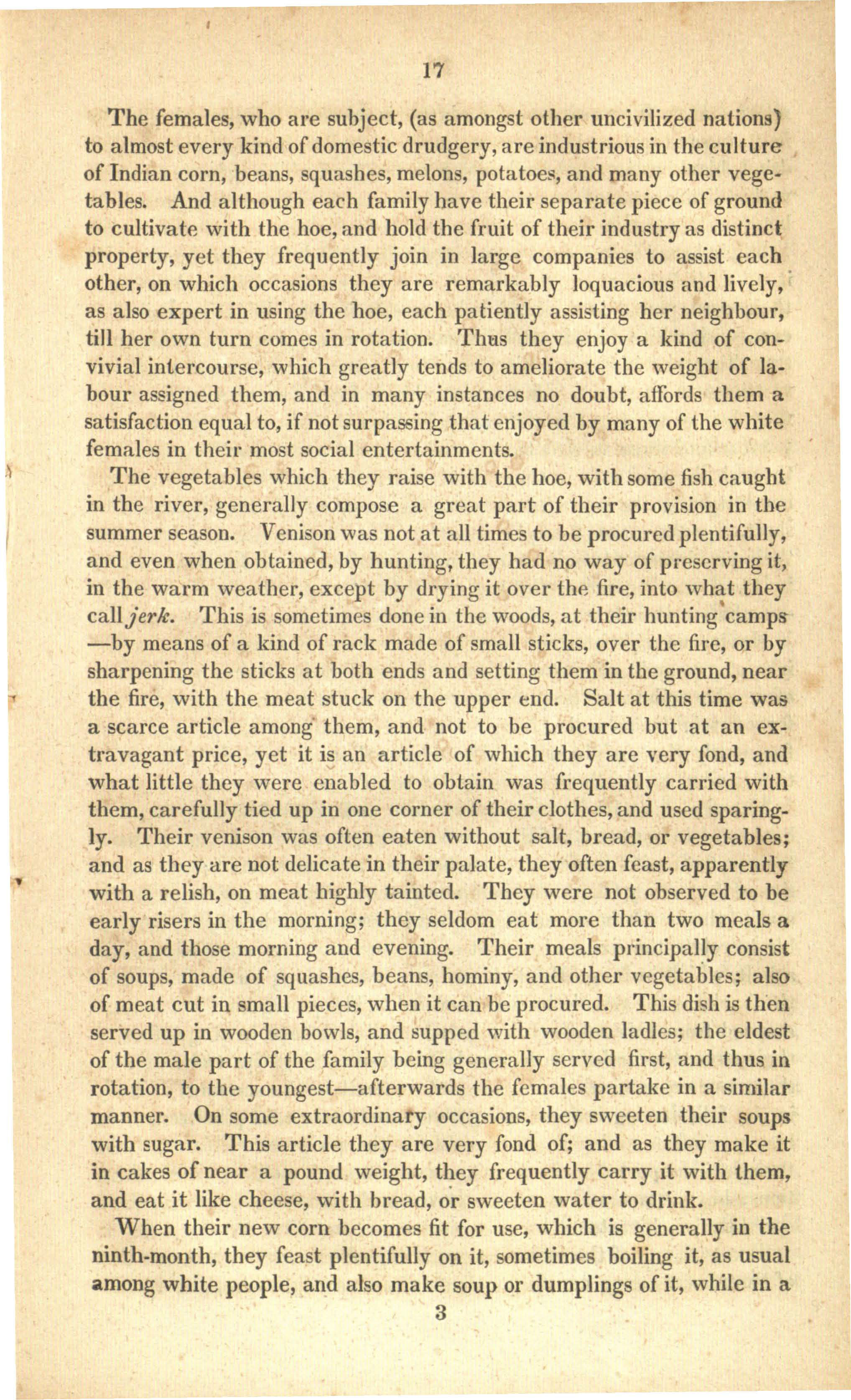The females, who are subject, (as amongst other uncivilized nation)
to
almost every kind of domestic drudgery, are industrious in the culture
of
Indian corn, beans, squashes, melons, potatoes, and many other vege-
tables.
And although each family have their separate piece of ground
to cultivate
with the hoe, and hold the fruit of their industry as distinct
property,
yet they frequently join in large companies to assist each
other, on which
occasions they are remarkably loquacious and lively,
as also expert in
using the hoe, each patiently assisting her neighbour,
till her own turn
comes in rotation. Thus they enjoy a kind of con-
vivial intercourse, which
greatly tends to ameliorate the weight of la-
bour assigned them, and in
many instances no doubt, affords them a
satisfaction equal to, if not
surpaaaing that enjoyed by many of the white
female in their most social
entertainments.
The vegetables which they raise with the hoe, with some fish caught
in the
river, generally compose a great part of their provision in the
summer
season. Venison was not at all time to be procured plentifully,
and even
when obtained, by hunting, they had no way of preserving it,
in the warm
weather, except by drying it over the fire, into what they
call jerk. This
is sometimes done in the woods, at their hunting camps
- by means of a kind
of rack made of small sticks, over the fire, or by
sharpening the sticks at
both ends and setting them in the ground, near
the fire, with the meat
stuck on the upper end. Salt at this time was
a scarce article among them,
and not to be procured but at an ex-
travagant price, yet it is an article
of which they are very fond, and
what little they were enabled to obtain
was frequently carried with
them, carefully tied up in one corner of their
clothes, and used sparing-
ly. Their venison was often eaten without salt,
bread, or vegetables;
and as they are not delicate in their palate, they
often feast, apparently
with a relish, on meat highly tainted. They were
not observed to be
early risers in the morning; they seldom eat more than
two meals a
day, and those morning and evening. Their meals principally
consist
of soups, made of squashes, beans, hominy, and other vegetables;
also
of meat cut in small pieces, when it can be procured. This dish is
then
served up in wooden bowls, and supped with wooden ladles; the
eldest
of the male part of the family being generally served first, and
thus in
rotation, to the youngest - afterwards the females partake in a
similar
manner. On some extraordinary occasions, they sweeten their
soups
with sugar. This article they are very fond of; and as they make
it
in cakes of near a pound weight, they frequently carry it with
them,
and eat it like cheese, with bread, or sweeten water to drink.
When their new corn becomes fit for use, which is generally in the
ninth-month, they feast plentifully on it, sometimes boiling it, as usual
among white people, and also make soup or dumplings of it, while in a

